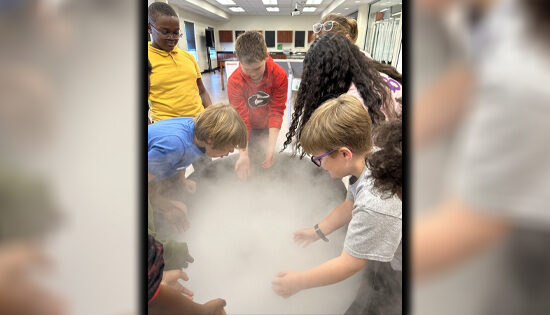SOURCES: “The Jackson Road” by Fannie Marie Gibbs, FORBES.com
Story and Photos by Robin Postell
MORVEN, Ga. – The Macedonia Community Foundation came together on Thursday, February 14, at 10 a.m. to discuss restoration of an historic cemetery filled with potentially hundreds of graves.
They met at the New Macedonia Baptist Church on Jackson Road in Brooks County, Georgia – and many of the foundation members are Jacksons. There is much history in the room, stretching back generations, centuries.

The cemetery in question has always been referred to by them since youth as the “slave-Indian cemetery”, just beyond the church grounds – now landlocked through a series of fateful accidents and errors, concerning verbal agreements allowing access rendered useless, and house fires incinerating some important deeds and records.
The group is patient, but they know time isn’t on their side.
There is a grove of trees, “just over there,” said Fannie Marie Gibbs, who grew up with her siblings and cousins on Jackson Road in a family home that adorns the cover of her stirring historical memoir, The Jackson Road.
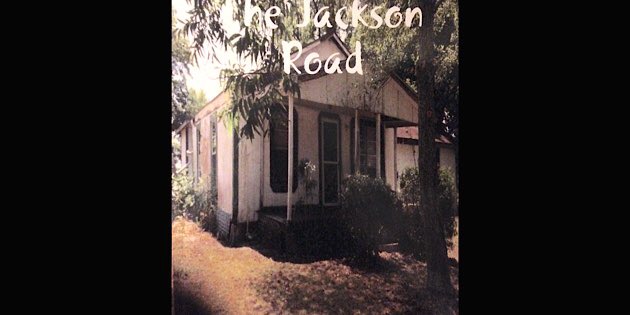
“This mini work traces the Andrew Jackson I and Romeo Wilson I families and their descendants from 1818 to 2018 in Brooks County, Georgia. Included here are the previously untold stories of eyewitness testimonies to the Mary and Hazel Turner lynching tragedies of May 1918. Andrew Jackson, an enslaved man of West African descent and his wife Sidney Wilson and her brother Romeo Wilson, natives of mixed Creek and white ancestry helped to make “The Breadbasket of the Confederacy.”
The Jackson Road by Fannie Marie Jackson
While Gibbs’ account in The Jackson Road dives deep into her family’s history, there is always more. She brims over with information, including the infamous day in 1918 when countless blacks were lynched following the shooting death of a white landowner by a black worker driven to violence over an unpaid debt.
Mary Turner, a young pregnant woman, was the wife of one of the lynched men suspected of the conspiracy of murdering the white man and injuring his wife. She knew her husband, Hayes Turner, was innocent and had been with her at the time of the killings. While the blacks in the area fearfully and surreptitiously attempted to protect their own, Mary became enraged over her husband’s senseless killing by the white mob and slipped away determined to “swear out a warrant.” Instead, she was captured by the angry mob and hanged upside down, her baby cut from the womb and stomped beneath a white man’s boot heel.
These are complicated tales. A tightly woven history steeped in oral “griot” traditions, passed down through the generations and told from differing perspectives depending on who is doing the telling.
Her older brother, Oglesby Jackson, has been the family griot, the West African term for the historian of a lineage, a poet, a storyteller – passing down oral history as it was passed to him. He served in Vietnam, and obtained a Masters degree in History, teaching most of his life at Lowndes Middle and Hahira Middle Schools.
Oglesby, or as Fannie calls him, “Osby,” or “Bee,” talks to their first cousins, Jerry Alexander, and Jerry Denson – both deacons at New Macedonia Baptist Church.
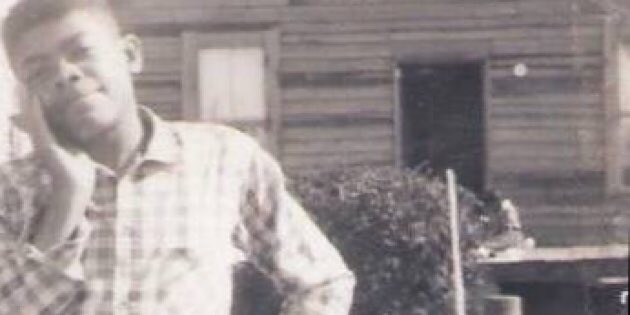
Oglesby slides on his Army Veteran cap when the camera points his way, flashing a wide, shining grin. His stories are rich, robust. They carry. His words stitch together images of his great-great-great-granddaddy, and how he had been the slave of a powerful landowner, and when that land/slave owner had gone off to fight for the Confederacy in the Civil War, he had left him in charge of his 99 slaves.
A slave in charge of slaves.
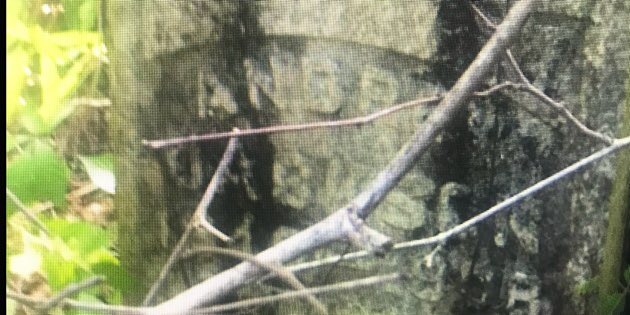
Fannie Marie chuckles watching her brother tell their stories. Their first cousins, Jerry, Jerry and Estelle, have stories, too.
After the meeting closes around noon, the cousins mill about and Oglesby tells Valdosta Today more tales about his greats, his grands, his aunts and uncles, the powerful white landowners, slave owners, the interrelated people…the whites, the blacks, the mixed…
Oglesby begins referring to a horse carved by an African-born slave and how it was passed to him as a boy with the understanding he would continue, as the chosen griot (historian, storyteller, praise singer, poet, or musician – a repository of oral tradition).
Where is the horse? he was asked. Oglesby said he happened to have brought it, it’s in his truck, and off he wanders. When he returns, he is holding a delicate piece of history – a white wooden, hand-carved horse which is over 200-years-old. The horse is attached to a wooden base with two tiny metal wheels on it. He handles the fragile relic with a quiet but palpable pride. This marvel has been in his personal vault for half a century. He was given it with the understanding he would pass it to someone eventually who could continue passing down the history.
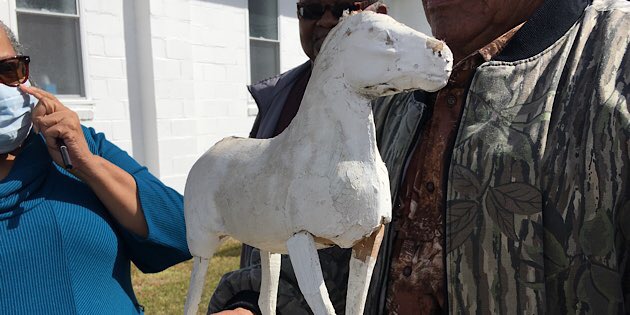
“Who are you going to give it to?” he is asked.
“I have no idea,” he said, his cousins and sister standing by him “mm-hmming” and shaking their heads. “The young people today don’t care about this kind of thing.”
“It’d wind up on the fire pile,” one of them chimes in.
Who will inherit the treasure?
The focus for the time being is on getting to that cemetery before it is lost to time and nature and memory.
The day before the Valentine’s Day meeting, Forbes contributor and archaeologist/cultural heritage researcher David S. Anderson, published an article titled, “New Legislation Seeks To Protect Lost African-American Burial Grounds,” https://www.forbes.com/sites/davidanderson/2019/02/13/new-legislation-seeks-to-protect-lost-african-american-burial-grounds/#13d81fdb5dd8.
Anderson pointed out how new construction projects across the U.S. encounter archaeological materials that represent the last traces of lives lived by people like the Jackson clan.
…and all too often, those materials turn out to be from cemeteries and burial grounds used by segregated and enslaved African American communities. These cemeteries typically went undocumented on local and state government maps and graves were often only marked ephemerally, thus making these spaces all but invisible in the present day.”
Forbes.com, “New Legislation Seeks to Protect Lost African American Burial Grounds”
Congressman A. Donald McEachin, representing Virginia’s Fourth District, and Congresswoman Alma Adams, representing North Carolina’s Twelfth District, proposed this legislation that would amend title 54 of the United States Code.
The African American Burial Grounds Network, https://sha.org/blog/2019/02/african-american-burial-grounds-network-act/as a result, could be part of the U.S. National Park Service, creating a nationwide database of these cemeteries and offer help to those attempting to preserve them through grants and other types of assistance.
The Macedonia Community Foundation’s meeting fell into a timely slot, and people like Sidney Jackson, and Andrew Jackson I, and all the other characters of historical relevance – not just to their families but to the communities both local, regional, national, and global – will, hopefully, survive.
It will take organization.
“It will take a lot of other minds and efforts,” Fannie Marie Gibbs says, whose book The Jackson Road is in its second printing and available online. “But we believe in spirit…and we know when spirit is working.”












